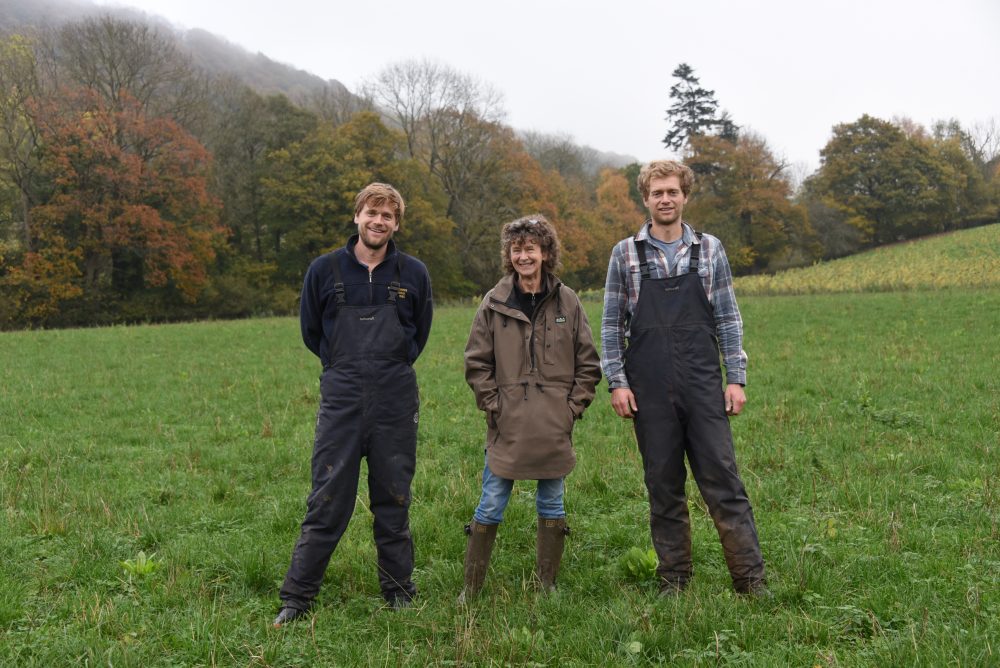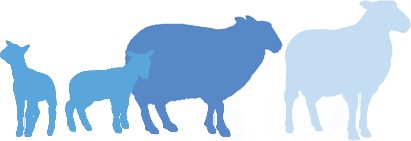NSA Welsh Sheep Farm Preview - High Country Romneys
30th December 2024
NSA Welsh Sheep 2025 is the highlight of the sheep farming calendar, with a full programme of activities to engage, inform and help address future challenges. The event will be at Tregoyd farm, near Hay on Wye. There will be tractor rides to the higher ground, rising to 1200 feet above sea level. Gaina Morgan reports….
Distinctive woolly-headed Romneys bobbing around distinguish the venue for NSA Welsh Sheep 2025. It is just 15 minutes from Hay on Wye and easily accessible from Wales, the Midlands and beyond, set against the spectacular back drop of the Black Mountains.
The event will offer a professional update and the latest industry information, as well as a chance for sheep farmers to get together. High Country Romneys is a family partnership comprising Mum, Penny Chantler, and sons, Will and Sam Sawday.
Their focus is to breed rams to suit low input, sustainable systems. Penny considers hosting Welsh Sheep 2025 as an opportunity to ‘showcase sustainability’ in the face of environmental change.
The farming system was initiated by Penny and her late husband, Richard, 30 years ago. The 1500 ewe flock now comprises internationally renowned Romneys and RomTex.
The 600-ewe stud flock and 900 ewe commercial flock are reared on a forage based, outdoor lambing system, with the land rising to 1400 feet above sea level. The family describes the Romney as ‘the ultimate in low input, maternal sheep’. The highly efficient animals thrive in all UK conditions, with proven worm resistance and an unbeatable performance off grass. The RomTex combines the New Zealand Texel’s terminal traits to produce an easy lambing, exceptional good milking ewe. They rear very fast-growing lambs achieving better grades and killing out percentages. Cleaner heads and legs make them more suited to liveweight trading.
Underpinning the stud flocks are regular ram imports from some of New Zealand’s best flocks. Highly detailed monitoring and data capture is key, backed by 30 years of performance recording with SIL (Sheep Imp Ltd), the New Zealand equivalent to Signet.
Will says: “We look at what the future challenges are and cost, weather and disease stand very proudly. “I think we can only manage what we have control of and reducing our reliance on upstream resources without heavily comprising yield seems like a no brainer. Derisking farm businesses across all sectors is a massive goal.
“Taking out the big financial drains on sheep businesses makes farming a lot less stressful. Reducing labour frees up time to spend on other enterprises or to work off farm or even taking time off.
“Genetics can play a key part in addressing these factors and this style of breeding can enable thriving businesses.”
Richard Chantler founded the flock 40 years ago, when he was head shepherd for Wye College, Kent. His Nuffield scholarship to New Zealand meant he studied very progressive stud flocks. The college’s successful breeding programme using NZ Romney genetics improved the productivity and efficiency of British Romneys. The link to New Zealand has continued down the years, with Penny, Will and Sam continuing to make ‘shopping trips’ to source genetics.
High Country Romneys now includes the tenanted Tregoyd Farm, Brecon, and other smaller blocks of land in the Hay-on-Wye area. Little infrastructure, machinery and labour, combined with the geographical locations of the blocks of land means the sheep system needs to be simple and low input. This allows them to spend time on stud data management and ram sales as well as running their secondary enterprise - calf rearing. The farm takes batches of 170 calves through the Blade scheme and rears them on milk for 12 weeks until they go to a finisher. They have a small amount of part time help with the calves and just one loader tractor. Contractors are then utilised as much as possible. Sam says: “We want to be sat on tractors for as little time as possible and we want to be paying for them even less.” The three main groups of sheep are looked after by the brothers. Will takes responsibility for the performance recording and genetics. Sam heads up the calf rearing. Mum, Penny, ‘fills in the gaps’. She likes to share her deep knowledge of wool, having studied Textile Design at Leeds University. She is the southern region board member for British Wool, a quirk of the fact that while they farm in Wales the postcode is Hereford.
The farm tries to do its best environmentally. Stewardship schemes and grants are utilised as much as possible and regenerative practices are being adopted to improve soil and animal health. Practices that they believe will improve environmental and financial resilience.
The ram lambs are initially selected on raw performance and ebvs, with a big focus on the post weaning worm challenge. The latter determines the lamb’s resistance and resilience to worms.
The aim of both of these programmes is to identify ram lambs that don’t need drenching and can grow well, despite being faced with a heavy worm challenge. The programmes are complicated. They entail constant weighing and monitoring and the collection of around 200 faecal samples from individual ram lambs. Blood IGA samples are also taken from these rams to improve accuracy. Lambing begins in April, with all the ewes out, having been on forage crops for two months. This is followed by grass rotations from the beginning of March until lambing.
About 1% assistance is required and if animals need to be brought in then they are culled. The recorded stud sheep are tagged and recorded at birth. The ewes and lambs are then bunched into big groups of 400/500 ewes, rotationally grazed through summer.
Data is regularly collected from weaning until Autumn, including regular weighing, back fat scanning, as well as the resistance and resilience programmes. Lambs that don’t meet standards are sold store in local markets or finished to Farmers Fresh.
The 900 or so are mostly fed on grass are sold from August through to March. Ram lambs that make the cut based on their performance data, ebvs and visual appraisal are wintered on grass and sold as shearlings privately off the farm.
The work is ongoing. The farm has been apart of Farming Connect’s Welsh Sheep Genetics Programme. This funds the collection of additional data such as back fat scanning, FEC and IGA samples.
Further, it is funding them to put rams through a PAC chamber to measure methane output and measure carcass data from a CT scanner. DNA samples will also be taken to ascertain genomic breeding values to make current breeding values more accurate.
The overall aim is to produce genetically proven rams with the resilience required to adapt to a rapidly changing world. The family is continually working to adjust their sheep to a more sustainable system, well able to weather unpredictable environmental and economic change. We are pleased that Mayo Animal Health are a major sponsor of the event as we use the 4 in 1 Mayo boluses, pre tupping and pre lambing
And it’s important to enjoy the journey, from time to time sharing with others the joy of sustainable sheep farming. There are frequent farm visits and this year, of course, the main event is NSA Welsh Sheep 2025.



